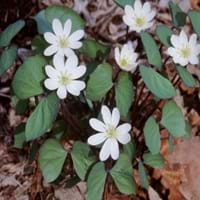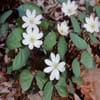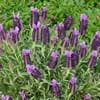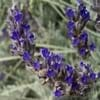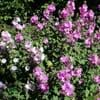Life Span
Perennial
Perennial
Origin
North America, United States, Northeastern United States, Mid-Atlantic United States, Southeastern United States, Canada
World, Pandemic, North America, Europe, Africa, Asia
Types
Not Available
Not Available
Habitat
gardens, Hardwood forests
Bluffs, Sandy stream banks, Wooded slopes
USDA Hardiness Zone
5-7
4-10
Sunset Zone
2a, 2b, 3a, 3b, 4, 5, 6, 7, 8, 9, 10
2b, 3a, 3b, 4, 5, 6
Habit
Clump-Forming
Clump-Forming
Flower Color
White
White, Purple, Lavender, Blue Violet
Flower Color Modifier
Bicolor
Bicolor
Fruit Color
Light Green
Not Available
Leaf Color in Spring
Green, Blue Green
Green
Leaf Color in Summer
Green, Gray Green
Green
Leaf Color in Fall
Green, Gray Green
Green
Leaf Color in Winter
Light Green
Light Green
Leaf Shape
Butterfly shaped
Long Linear
Plant Season
Spring, Summer, Fall
Spring, Summer
Sunlight
Partial shade, Full Shade
Full Sun, Partial Sun
Type of Soil
Clay, Loam
Clay, Loam, Sand
The pH of Soil
Neutral, Alkaline
Acidic, Neutral, Alkaline
Soil Drainage
Average
Well drained
Bloom Time
Late Spring, Early Summer
Spring
Tolerances
Drought
Drought
Where to Plant?
Ground, Pot
Container, Ground
How to Plant?
Divison, Seedlings, Stem Planting
Seedlings, Stem Planting, Transplanting
Plant Maintenance
Medium
Medium
Watering Requirements
Medium
Medium, Requires watering in the growing season
In Summer
Lots of watering
Lots of watering
In Spring
Moderate
Moderate
In Winter
Average Water
Average Water
Soil pH
Neutral, Alkaline
Acidic, Neutral, Alkaline
Soil Type
Clay, Loam
Clay, Loam, Sand
Soil Drainage Capacity
Average
Well drained
Sun Exposure
Partial shade, Full Shade
Full Sun, Partial Sun
Pruning
Remove deadheads, Requires very little pruning
Remove damaged leaves, Remove dead branches, Remove dead leaves
Fertilizers
No fertilizers needed
All-Purpose Liquid Fertilizer
Pests and Diseases
Pests and diseases free, Red blotch
Red blotch
Plant Tolerance
Drought
Drought
Flower Petal Number
Single
Single
Foliage Texture
Coarse
Medium
Foliage Sheen
Matte
Matte
Attracts
Bees, Butterflies
Bees, Insects
Allergy
no allergic reactions
Skin irritation
Aesthetic Uses
Showy Purposes
Beautification, Ground Cover, Landscape Designing, Showy Purposes
Beauty Benefits
Not Available
Not Available
Environmental Uses
Air purification
Air purification
Medicinal Uses
Cancer, Diuretic
Liver problems, Skin Disorders, Treatment of ulcers
Part of Plant Used
Flowers, Root
Flowers, Leaves
Other Uses
Not Available
Employed in herbal medicine, Used as a spice
Used As Indoor Plant
Yes
Yes
Used As Outdoor Plant
Yes
Yes
Garden Design
Feature Plant, Groundcover
Bedding Plant, Cutflower, Mixed Border, Rock Garden, Wall
Botanical Name
JEFFERSONIA diphylla
IRIS cristata
Common Name
Not Available
Crested Iris
In Hindi
Twinleaf
कलगी आइरिस
In German
Twinleaf
Crested Iris
In French
Twinleaf
Crested Iris
In Spanish
Twinleaf
Crested Iris
In Greek
Twinleaf
Crested Iris
In Portuguese
Twinleaf
Crested Iris
In Polish
Twinleaf
Czubaty Iris
In Latin
Twinleaf
iubatum Iris
Phylum
Tracheophyta
Not Available
Class
Magnoliopsida
Liliopsida
Order
Ranunculales
Asparagales
Family
Berberidaceae
Iridaceae
Clade
Angiosperms, Eudicots
Angiosperms, Monocots
Tribe
Not Available
Irideae
Subfamily
Not Available
Iridoideae
Number of Species
Not Available
Not Available
Difference Between Twinleaf and Crested Iris
If you are confused whether Twinleaf or Crested Iris are same, here are some features about those plants to help you choose better. Many people think that these two plants have the same characteristics, but one can see Twinleaf and Crested Iris Information and learn more about it. Fertilizers required for proper growth of Twinleaf are No fertilizers needed, whereas for Crested Iris fertilizers required are All-Purpose Liquid Fertilizer. Hence, one should know the basic difference between Twinleaf and Crested Iris if you are planning to have them in your garden to enhance its beauty.
<
Flowering PlantsImportance of Twinleaf and Crested Iris
Want to have the most appropriate plant for your garden? You might want to know the importance of Twinleaf and Crested Iris. Basically, these two plants vary in many aspects. Compare Twinleaf and Crested Iris as they differ in many characteristics such as their life, care, benefits, facts, etc. Every gardener must at least have the slightest clue about the plants he wants to plant in his garden. Compare their benefits, which differ in many ways like facts and uses. The medicinal use of Twinleaf is Cancer and Diuretic whereas of Crested Iris is Liver problems, Skin Disorders and Treatment of ulcers. Twinleaf has beauty benefits as follows: Not Available while Crested Iris has beauty benefits as follows: Not Available.
Compare Facts of Twinleaf vs Crested Iris
How to choose the best garden plant for your garden depending upon its facts? Here garden plant comparison will help you to solve this query. Compare the facts of Twinleaf vs Crested Iris and know which one to choose. As garden plants have benefits and other uses, allergy is also a major drawback of plants for some people. Allergic reactions of Twinleaf are no allergic reactions whereas of Crested Iris have Skin irritation respectively. Having a fruit bearing plant in your garden can be a plus point of your garden. Twinleaf has showy fruits and Crested Iris has no showy fruits. Also Twinleaf is flowering and Crested Iris is flowering. You can compare Twinleaf and Crested Iris facts and facts of other plants too.
